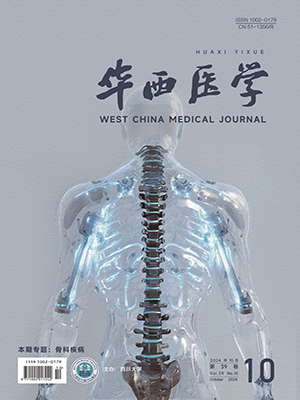| 1. |
van de Beek D, Farrar JJ, De Gans J, et al. Adjunctive dexamethasone in bacterial meningitis: a meta-analysis of individual patient data. Lancet Neurol, 2010, 9(3): 254-263.
|
| 2. |
刘发彬, 周小茜, 刘凯, 等. 隐球菌脑膜炎42例临床分析. 华西医学, 2009, 24(5): 1157-1159.
|
| 3. |
Ko JH, Baek JY, Kang CI, et al. Bacteremic meningitis caused by Parvimonas micra in an immunocompetent host. Anaerobe, 2015, 34: 161-163.
|
| 4. |
Finegold SM, Attebery HR, Sutter VL. Effect of diet on human fecal flora: comparison of Japanese and American diets. Am J Clin Nutr, 1974, 27(12): 1456-1469.
|
| 5. |
Rams TE, Feik D, Litsgarten MA, et al. Peptostreptococcus micros in human periodontitis. Oral Microbiol Immunol, 1992, 7(1): 1-6.
|
| 6. |
Didilescu AC, Rusu D, Anghel A, et al. Investigation of six selected bacterial species in endo-periodontal lesions. Int Endod J, 2012, 45(3): 282-293.
|
| 7. |
Murdoch DA, Shah HN. Reclassification of Peptostreptococcus magnus (Prevot 1933) Holdeman and Moore 1972 as Finegoldia magna comb. nov. and Peptostreptococcus micros (Prevot 1933) Smith 1957 as Micromonas micros comb. nov. Anaerobe, 1999, 5: 555-559.
|
| 8. |
Cobo F, Rodríguez-Granger J, Sampedro A, et al. Pleural effusion due to Parvimonas micra. A case report and a literature review of 30 cases. Rev Esp Quimioter, 2017, 30: 285-292.
|
| 9. |
Gendron R, Grenier D, Maheu-Robert L. The oral cavity as a reservoir of bacterial pathogens for focal infections. Microbes Infect, 2000, 2(8): 897-906.
|
| 10. |
Yoshioka M, Grenier D, Mayrand D. Binding of Actinobacillus actinomycetemcomitans lipopolysaccharides to Peptostreptococcus micros stimulates tumor necrosis factor α production by macrophage-like cells. Oral Microbiol Immunol, 2005, 20(2): 118-121.
|
| 11. |
Lafaurie GI, Mayorga-Fayad I, Torres MF, et al. Periodontopathic microorganisms in peripheric blood after scaling and root planing. J Clin Periodontol, 2007, 34(10): 873-879.
|
| 12. |
Prieto R, Callejas-Díaz A, Hassan R, et al. Parvimonas micra: a potential causative pathogen to consider when diagnosing odontogenic brain abscesses. Surg Neurol Int, 2020, 11: 140.
|
| 13. |
Baron EJ, Miller JM, Weinstein MP, et al. A guide to utilization of the microbiology laboratory for diagnosis of infectious diseases: 2013 recommendations by the Infectious Diseases Society of America (IDSA) and the American Society for Microbiology (ASM)(a). Clin Infect Dis, 2013, 57(4): e22-e121.
|
| 14. |
Murphy EC, Frick IM. Gram-positive anaerobic cocci--commensals and opportunistic pathogens. FEMS Microbiol Rev, 2013, 37(4): 520-553.
|
| 15. |
Brazier J, Chmelar D, Dubreuil L, et al. European surveillance study on antimicrobial susceptibility of Gram-positive anaerobic cocci. Int J Antimicrob Agents, 2008, 31(4): 316-320.
|
| 16. |
Lee Y, Park Y, Kim MS, et al. Antimicrobial susceptibility patterns for recent clinical isolates of anaerobic bacteria in South Korea. Antimicrob Agents Chemother, 2010, 54(9): 3993-3997.
|
| 17. |
Rams TE, Dujardin S, Sautter JD, et al. Spiramycin resistance in human periodontitis microbiota. Anaerobe, 2011, 17(4): 201-205.
|
| 18. |
Jones SL, Riordan JW, Glasgow AL, et al. Two cases of spondylodiscitis caused by Parvimonas micra. Intern Med J, 2015, 45(10): 1090-1091.
|
| 19. |
中华医学会儿科学分会神经学组. 儿童社区获得性细菌性脑膜炎诊断与治疗专家共识. 中华儿科杂志, 2019, 57(8): 584-591.
|




